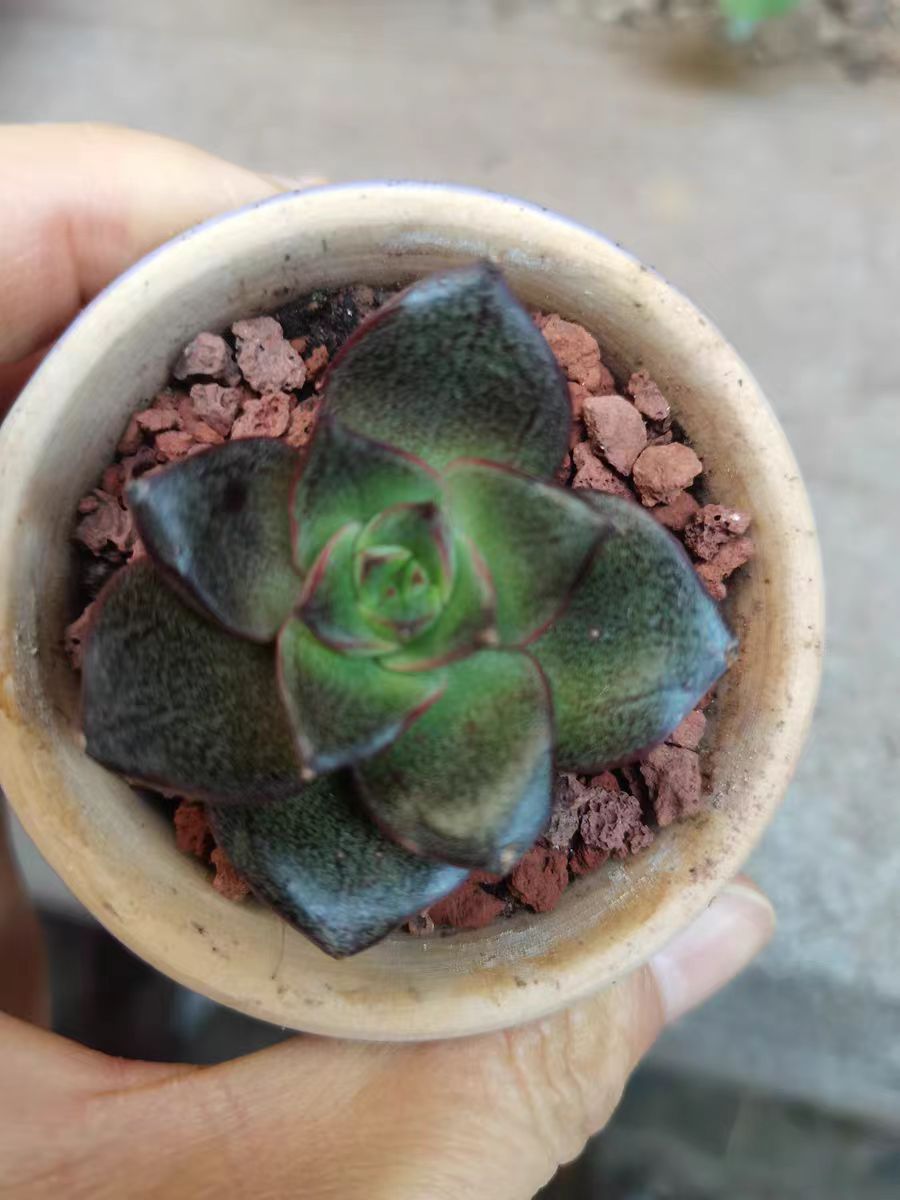Many succulent plant enthusiasts wonder whether the Echeveria purpusorum grows quickly. In fact, its growth rate is moderately slow compared to other succulents. As a classic variety in the Echeveria genus of the Crassulaceae family, it takes a relatively long time for a single head of Echeveria purpusorum to grow into a medium-sized adult plant. Under natural conditions, only a few layers of new leaves emerge each year, and the spread of its leaves also increases slightly annually. Its thick, compact leaves form a rosette shape, which inherently limits its growth speed—it grows slightly faster than tiny succulent varieties but significantly slower than large ones.
What factors affect its growth rate?
Light: Sufficient direct sunlight every day is essential for the leaves to perform photosynthesis effectively. During the vigorous growth period in spring and autumn, it can produce one or two new leaves per month. Insufficient light can cause the plant to become tall and lanky, with thinner and longer leaves, leading to even slower growth.
Temperature: It thrives in an environment of 15–25°C. Spring and autumn are its prime growing seasons, while it enters a "resting" state and basically stops growing at extremely low or high temperatures.
Water Management: Water only when the soil is completely dry, and ensure thorough watering each time. Maintaining appropriate watering frequency during the growing season helps it grow steadily. Too little water will stunt its growth, while excessive water can easily cause root rot.
Soil: Plant it in breathable granular soil (such as volcanic stone or zeolite) mixed with peat soil. This type of soil retains some moisture while preventing root suffocation, making it more conducive to growth than pure peat soil.
In terms of maintenance, apply a small amount of slow-release fertilizer specific for succulents in spring and autumn, being careful not to over-fertilize to avoid leaf deformation. Repotting periodically is also beneficial—renewing the soil and trimming aged roots during repotting can rejuvenate the plant and promote faster growth.
Now, let’s talk about flowering. Echeveria purpusorum usually produces flower spikes in spring, with slender flower stems emerging from the center of the leaves and small orange-red flowers blooming at the top. Flowering consumes a significant amount of the plant’s nutrients, which may temporarily make the leaves thin and soft, and in severe cases, accelerate the withering of lower leaves. However, unlike some succulents that die after flowering, it only becomes temporarily weak and can still produce seeds through pollination.
Should you cut off the flower spikes after flowering? It depends on your cultivation goals. If you want to maintain the plant’s attractive shape, the flower stems will disrupt the symmetrical beauty of the leaves, especially for single-headed plants. It is recommended to cut off the flower spikes as soon as they emerge. Removing flower spikes also allows the plant to allocate nutrients to side buds, making it easier to grow into a full pot. Additionally, the base of the flower stem may retain moisture in humid environments, leading to fungal infections. Applying carbendazim to the cut wound can prevent diseases.
If you want to keep the flower spikes for ornamental purposes or propagation, supplement the plant with nutrients by spraying succulent-specific phosphorus-potassium fertilizer or burying suitable granular fertilizer around the roots. After the flowers fully wither, promptly cut off the flower stems to prevent continued nutrient consumption. If the plant’s leaves become wrinkled during the flowering period, cut off the flower spikes in advance and water thoroughly to help it recover.
In summary, there’s no need to rush the growth of Echeveria purpusorum—stability and health are most important. After flowering, handle it according to your preferences: cut off the flower spikes if you prefer the elegant single-headed form, or keep them for 赏花 (appreciating flowers) or propagation with extra care. With attention to light, watering, fertilization, and pruning, Echeveria purpusorum will thrive beautifully, whether as a single plant or a lush pot, exuding its unique charm.
Does the Echeveria purpusorum succulent grow fast?

Share with
Tagged in :




Leave a Reply